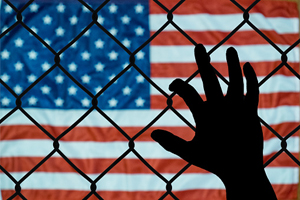
In the world today there are more than 65 million asylum seekers, internally displaced persons, or refugees -- half of whom are children under 18. Refugees spend, on average, about 20 years in exile. Education is the primary means through which these marginalized populations can rebuild their lives and reintegrate into society.
Institutional responsibility
Assisting these populations when possible is a great social responsibility of higher education institutions, in addition to furthering institutional goals pertaining to internationalization, diversity, and inclusion.
As the Lisbon recognition convention reminds us:
Conscious of the fact that the right to education is a human right, and that higher education, which is instrumental in the pursuit and advancement of knowledge, constitutes an exceptionally rich cultural and scientific asset for both individuals and society;
Considering that higher education should play a vital role in promoting peace, mutual understanding and tolerance, and in creating mutual confidence among peoples and nations;
… Each Party shall take all feasible and reasonable steps within the framework of its education system and in conformity with its constitutional, legal, and regulatory provisions to develop procedures designed to assess fairly and expeditiously whether refugees, displaced persons and persons in a refugee-like situation fulfill the relevant requirements for access to higher education, to further higher education programmes or to employment activities, even in cases in which the qualifications obtained in one of the Parties cannot be proven through documentary evidence.
Challenges in documenting alternative admissions strategies
In the U.S., individual educational institutions have autonomy to evaluate educational documents for the admissions and placement of international students based on their institutional mission and policies. Institutions do this work with varying degrees of expertise and using a variety of resources, generally based on a set of benchmarked norms.
However, for students for whom education has been interrupted by natural disaster, conflict, or other crisis, the standard benchmarks -- for example, regarding visas, transcripts, and other credentials -- may prove to be insurmountable barriers for re-entry into higher education.
Some institutions are willing to use alternative means of document assessment that are both academically defensible and supportive to displaced and vulnerable students. However, those institutions may be unwilling to draw attention to their work for fear of negative reaction from administration, faculty or press, leaving a lacuna in policy and practice documentation that other institutions can follow.
Sharing best practices: The pitfalls of publicizing
“It can be really hard to have conversations about flexible and conditional admissions policies in the open, because institutional representatives don’t want to be seen as treating different student populations differently,” said Annetta Stroud, Training and Program Development, AACRAO International.
However, admissions, enrollment, and international officers can all benefit from open conversations about the creative ways institutions find to assess prior learning. Clear communication within and between institutions can help support consistent and equitable treatment of applicants while also supporting access goals.
Because of the reticence in the field to publicize flexible policies, alongside with the need for greater transparency and discussion of these issues, AACRAO has been working with representatives from over higher education institutes, IIE-PEER (the Institute of International Education’s Platform for Education in Emergencies Response), Scholars at Risk, EducationUSA, and representatives from the field of international credential evaluation - including WES and ECE, to develop a white paper articulating best practices and policy recommendations for conditional and flexible admissions policies for vulnerable student populations, to be published in early 2019. The policy paper will be released at the AACRAO Annual Meeting 2019 for membership endorsement.
Lessons learned and a toolkit for campuses
As part of this ongoing conversation, AACRAO and IIE PEER are hosting a practical workshop at the IIE Headquarters in New York City in late October.
The workshop will include breakout sessions on navigating visa requirements in the current political culture, the importance of communicating among different campus units, and how to align recruitment strategies with admissions policies to keep academic integrity intact. The presenters will share successful models, case studies, and lessons learned, as well as tell the stories of students and scholars who affected by these decisions.
“We’re hoping to give institutions baseline tools to start doing this work, offer a legal perspective and best practices from a student and institutional perspective about how to implement this toolkit back on your own campus,” Stroud said. “We hope institutions are encouraged to help these students, who bring such a wealth of experience, and cultural perspective and awareness to a campus.”
Learn more about the Friday, Oct. 26th workshop “Best Practices in Admitting Vulnerable and Displaced Student Populations to U.S. Campuses” and register now.